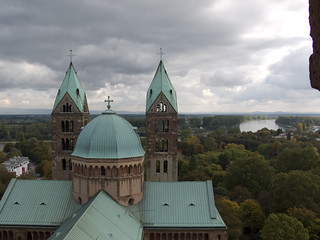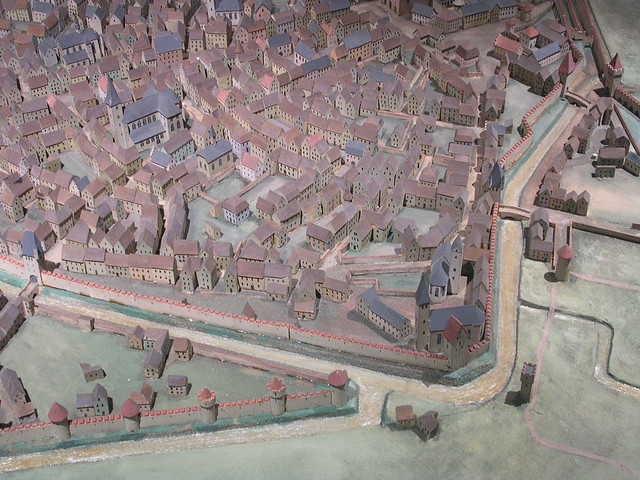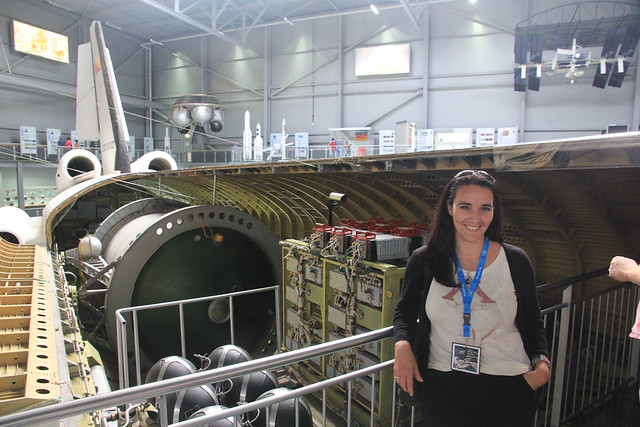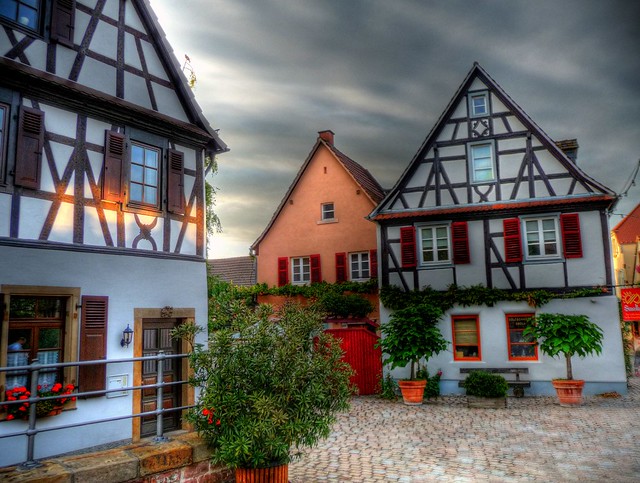American cities are empty gatherings, devoid of culture and community. By considering the model of a city that is functional but also comfortable, we can explore what our cities are missing and how we can fix them.
The American city often lacks heritage, location, planning, connection, and innovation with cultural distinction. Some of these things can be more easily achieved than others, and we can look to current examples of successes to learn how to encourage these traits. Speyer stands out because it contains these characteristics. The people there are happy because of their community involvement and sustainable lifestyle.
Heritage
Founded in 10 B.C., Speyer it is one of the oldest still-existing cities in Europe. Speyer was thrust into the spiritual center of Germania with the rise of Konrad II. The Speyer cathedral was built in 1061. Yet despite the large religious presence in Speyer, “the bishopric of Speyer never became an imposing principality.” 1Emperor Charles V had sought reconciliation between the Catholic majority and the Lutherans at the Second Diet of Speyer. When he later overturned this, Speyer became its own country Reichstadt Speyer. Although it only lasted for a little over a month, the small country changed the world’s religious landscape as the Protestant religion was officially founded there. Jews also found unusual acceptance in Speyer, and built a large synagogue. For these religious reasons and its proximity between Germany and France, Speyer was the center of the Thirty Years War, the Napoleonic Wars, and Hitler’s Gleichschaltung.
As is often seen in ancient places, Speyer’s long history of brutal attacks and ravages have left it characteristically humble. This history remains with the few descendants of families that have remained in Speyer for centuries. Much of Speyer’s significant architecture also remains to monumentalize its past.
Which American city can boast such a heritage? Only Philadelphia and Washington D.C. have been places of real historical significance. No American city is more than a few hundred years old. The most important part of the American city is missing is heritage.
Yet, John D. Kasarda claims that new cities have the advantage. New cities can more easily adapt and exploit changes to the larger economic community. Unencumbered by aging infrastructure, declining industry, and demographic borders, they can be more economically vibrant and territorially expansive. Old cities can compete economically and culturally only if population dispersal is treated carefully and shrinkage is planned. 2
Location
| Speyer lies on a strong upper-bank of the Rhine, between Bavaria and France. The proximity to various resources affords considerable economic and cultural benefits. As well as having a beautiful natural surrounding, Speyer’s nearness to such rich and diverse cities and countries allows great “spontaneity of free human exchange.” 3The United States was founded because of its opportune location between Europe and Asia. It is defendable and also a vital trading point. But Speyer isn’t the center of attention. Nearby Heidelberg and Mannheim have greatly grown in population while Speyer hasn’t. |  (Gunnar Ries zwo– flickr/creative commons license) |
This fortunate circumstance is the result of unfortunate events: frequent displacement of the city dwellers. The residents of Speyer had been displaced several times and the Jews had been completely killed off.
Nevertheless, Speyer now acts as a self-effacing circuit city. Intentional strategies such as growth-belts can be used for controlling land and population growth, but Kasarda points out that a city’s life-cycle will naturally flush out and introduce populations. The city should take a sensitive role in displacing populations from the city. 2
A city needs something it is well known for. Speyer is a tourist attraction due to its cathedral, clock tower, Technik Museum, and Brezelfest (pretzel festival.) The local geographic surroundings are naturally the most common staple of a city, but weather also cements a city’s character.
San Francisco has chipper ocean fog, Seattle has rain, Miami has sunshine, Chicago has wind, etc. People must experience the city’s distinct surroundings to appreciate a distinct character of the city. In Speyer, the only real mitigation of moist summer heat in Speyer comes from courtyards and thermal mass in the dense urban center. Also, materials in Speyer are natural and often locally made. Perhaps the only fake material is found at the ugly modernist Bahnhof (train station), which is unfortunately the first thing most visitors see. Sustainable, natural, locally made materials connect the people to the natural environment, connect buildings to the natural landscape and to each other, are generally healthier, and are healthier for the environment.
City Planning
The city must fit into the international, national, and regional contexts. The great humanist Johann Wolfgang von Goethe declared “Gothic” to be the style of good German residential buildings. He took exception to the idea that four columns like four tree trunks form the primeval hut. “Our houses are not made up of four columns in four corners,” he said, “they emerge from four walls on four corners… and where you find [columns] applied, they become burdensome.” 4
The societal rules inflicted by column orders, as opposed to mere separation of space, shape forms in Speyer. Speyer’s Catholic Cathedral is a light Romanesque building rather than Gothic, perhaps the greatest Romanesque architecture in Germany. The nearby Protestant Cathedral, however, is a great dark Gothic structure. This contradiction highlights the great religious strife, and compromise, that has engrossed the region. The other structures hold themselves to no such order, freedom from societal control.
There still needs to be comprehensive formal planning. Formal and individual planning creates layers. The city is organic and efficient. Frequent ravages and destruction afforded opportunities for hierarchal and axial city planning. The medieval city center has been largely preserved, a dense cultural, economic, and religious center (see image.) This is surrounded by neighborhoods of various residential densities, ethnicities, and age.
Roger Trancik is very explicit about how zoning needs to work in a city. Historic precedence needs to be respected, in the form of squares or large churches and the buildings around that should leave pockets of negative space for gathering and socializing. In Speyer this is achieved by formal planning surrounding large historically significant landmarks. Trancik’s answer for good residential building is “consistency in materials… deference to human scale… and by sequence of spaces defined by buildings, walls, gateways, and spires.” 5
In the 1960’s, the main street was closed to automobile traffic and became a great Fussgängerzon (pedestrian zone.) Yet residential space pervades the city core, tightly restrained and conforming. Even in the outlaying neighborhoods, land-owners simply can’t get selfish with their designs. Overall, the density is 3,000 people per square mile- not a lot by any means, but impressive for such a tiny city. Vast parks and squares combined with thin streets further prevent “lost space.”
American cities can achieve this by mixed zoning, reducing automobile traffic, emphasizing historical and humanistic landmarks as points of linkage, and by the creation of a human-scale city center. More than once, average Germans remarked to me that the greatest problem with American cities is the lack of a pedestrian zone in the city center. “A city needs a center!” I often heard. The residential neighborhoods need something to link to. The American suburbs don’t really link to anything but themselves.
The city needs pockets for gathering, parks and playgrounds,along these linkages. Speyer’s pedestrian zone between the clock-tower and Cathedral points to a massive park tucked behind the cathedral along the Rhein river, next to the Technik museum. Historic excavations are showcased in this lush green park. One proceeds along the path and the active topography and large trees give way to an impressive view of the river. Because this park is right next to the city center, next to the museum, close to the main high school (gymnasium), and is used as a pedestrian thoroughfare, it is a popular place for tourism, transportation, or just relaxing.
In addition, Speyer has an array of other parks close to important places and along important linkages. Another popular park across the railroad tracks hosts the city’s main youth center. Golden Gate Park in San Francisco hosts important places such as the De Young Museum, but isn’t very successful because there is little residential around it these days, and because it isn’t by a necessary pedestrian thoroughfare.
Central Park in New York is a better American example. It is surrounded by dense residential as well as important places such as the Metropolitan Art Museum, and it is often used as a pedestrian thoroughfare. It is necessary for American cities to have a variety of parks and squares that follow this fashion.
Because the medieval streets are so thin, mass transit is most convenient in Speyer. By train, Manheim is only 20 minutes away, and Heidelberg is only 45 minutes away. Frankfurt, Stuttgart, Strasburg, and Luxembourg are all within 2 hours by train. The frequency of trains, and Speyer’s large bus system, is quite impressive. In addition to the train, heavily used pedestrian paths link to all the cities surrounding Speyer. America desperately needs this emphasis on sustainable and mass transportation to relieve traffic congestion and to clean our air.
Frequent city-wide events foster human culture in the community. In addition to national holidays like Faschings and Weihnachts (Christmas), the entire city gets together in the city center for festivals every few weeks in the summertime. The pedestrian zone is lined with booths offering food and events for these festivals. After dark, the fun continues at the park with concerts and dancing. The emphasis on community in all types of city planning is evident when one first moves in: A few days after I officially moved into Speyer I received a friendly letter of welcome from the mayor which detailed yearly community events.
This amiable culture is a rebound from the difficult past. Speyer had long been a beacon to the abject, the Jews and Protestants. But isn’t that what America is supposed to be? “Bring us your oppressed!” Perhaps simple humanistic city planning can link our society to that heritage we should have, a truly liberal and inclusive people.
Mixing the new and the old, the rich and the poor, as Jane Jacobs suggests would help a lot. If we had a variety of residential structures, with residential present everywhere in the city, those necessary connections would be built. Architectural orders should not be used to distinguish class rank in homes or to pretty up store façades. They should be a used as a monument to our history. We need mass transportation, pedestrian linkages, and pedestrian zones to get people together. The city needs autonomous community events and holidays that people actually celebrate as a community.
Innovation & Cultural Distinction
“A great city is always tolerant, even permissive, and provides outlets for a wide range of human pleasures and vices.” 3
Ian Fleming listed hot girls and food as elements of a “thrilling city.”6 Food and hot girls always help. The City of Sin is not necessarily successful because these things are so readily available. But perhaps one of the reasons drug-use in middle-class suburbs is high is not because our communities are so morally sterile, but because they are simply ambivalent as a community. Tracy Certo claims that a city that welcomes young talent, is connective within itself and with other communities, fosters innovation, and yet holds on to its distinctive qualities will be reinvigorated. 7
Community connection is at the core of this issue, says the group “CEOs for Cities.” An emphasis on formal institutions of learning, families and neighborhoods, and wider tools of learning will encourage success as “people mix and mingle, sharing and combining ideas from different vantage points and traditions.” It isn’t dealing with “clockwork” of systems as many treat it, but “clouds” of people– innumerable particles that easily disperse. Broad gestures and the little things make the difference in cultural distinction. 8 A smaller community more easily establishes a culture all its own, but state-of-the-art newness also needs to occur.
Speyer shows Jane Jacobs was correct that new architecture needs to mingle with the new. A dazzling new bridge spans the Rhein.
It is education, however, that really invigorates Speyer. There are no less than 28 schools of various types and sizes crammed within Speyer. There is a top university in nearby Gernsheim. The global market for knowledge and ability is greater than the supply, greater than ever before. The world-class Technik Museum in Speyer compares classic achievements in aviation to new opportunities afforded by technology.
Healthcare is another point of emphasis. A large part of Speyer’s population is elderly, and there are many homes dedicated to care of the elderly. The old or sick can attend the nearby “health-wall,” a large wooden structure of seaweed and plants with water pouring down it as air passes through and is cleansed. Youth centers and parks further promote interactive learning and health treatment.
The most naturally diverse cities in America bring us the most innovation. Silicon Valley in California has a diverse ethnic population and world-class education facilities. Chicago and New York City likewise. But smaller cities can also have a unique culture and technological innovation by implementing community linkages and fostering individual responsibility in education and health.
The community should pull together and care about politics, actually take control over their politicians. Each person, each “particle in the cloud” carries responsibility for each educative unit. The children must be educated in formal institutions, but also by families and neighborhoods. And finally, the community should care for the sick, disabled, and elderly. Citizens of Speyer interact with other people on their community daily, yet welcome innovative economics and new and different people to their town. They frequently visit nearby towns for shopping and business, and most take vacations out of the country at least once a year.
Many cities rely on a town hall. Some have “community centers” complexes. But a community center isn’t enough. Formal planning fosters pedestrian traffic and human interaction. Hierarchal city planning with linkages to monuments and sustainable elements will help care for education and promote the mixing and interaction that bring a community together. A city can be small and tight-knit, yet inclusive and innovative.
Greater Role Of The Residents
It is up to the city planners, the politicians, but also each and every resident to make humanistic decisions that will make a city a much better place to live in America.
We have a significant heritage in America that needs to be imprinted into our cities, our monumental buildings and architectural language. Each city needs to emphasize its distinctive qualities by sustainable material use, linkages to historical places, omnipresent unassuming residential zones, and collaborative events that bring the community together. As our cities age, we can establish heritage and community by promoting pedestrian use, mass transit, carefully designed parks and squares, and a pedestrian-only city center.
Excitement and innovativeness in these communities isn’t clockwork or found on a moral compass. It isn’t about what is most “comfortable,” but emphasizes the educative and health needs of each person. Our irresponsibility diminishes our liberal and inclusive heritage. But it can be encouraged by implementing these simple qualities into our cities. Many issues dogging our cities- drugs, crime, low test scores, pollution, illness, depression, rudeness, etc.- can then, perhaps, just take care of themselves.
© Benjamin Blankenbehler
Originally written for the University of Idaho, 2007
Sources:
^Lawrence G. Duggan “Bishop and Chapter: The Governance of the Bishopric of Speyer to 1552” October, 1979 from Speculum, Vol. 54, No. 4. pp. 799-800
^R.D. Norton “City Life-cycles and American Urban Policy” March, 1983 from The American Journal of Sociology, Vol. 88, No. 5. pp. 1065-1067
^“What makes a City Great” 14 November, 1969
Time Magazine
^Johann Wolfgang von Geothe “Von deutscher Baukunst” 1772, BA Bd. 19, S. 29 ff.
^Roger Trancik “Finding Lost Space: Theories of Urban Design” 1986, pp.97-107, 108
^See: Ian Fleming “Thrilling Cities” 1963
^Tracy Certo “What makes a City Smart?” 1 November , 2006, from Pop City
^Joseph Cortright “Remixing Cities: Strategy for the City 2.0” October 2007 from CEOs for Cities
^Joseph Cortright “Remixing Cities: Strategy for the City 2.0” October 2007 from CEOs for Cities




